- Author Jason Gerald [email protected].
- Public 2024-01-19 22:11.
- Last modified 2025-01-23 12:04.
Always feeling sad? You may be depressed. However, feeling sad that lasts for a day or two does not necessarily indicate depression. Keep in mind that depression is a common psychological disorder that can have a significant impact on daily functioning/life, and is not just a feeling of sadness or depression. Those who are depressed cannot simply get out of the “snare of misery”, even if they really want to. Depression can quickly become a critical situation if mental, emotional, and physical symptoms begin to appear. The good news is that there are several ways to treat and prevent depression once you notice the symptoms.
Step
Part 1 of 3: Recognizing the Symptoms of Major Depressive Disorder
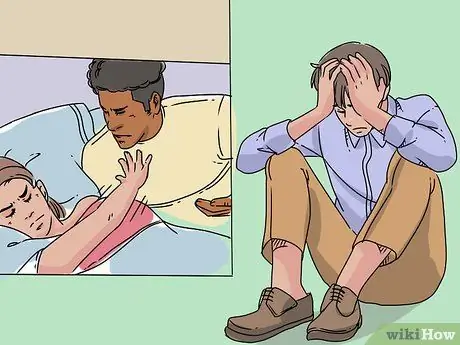
Step 1. Recognize mental/emotional symptoms
Depression is manifested in physical, mental, and emotional forms. Mental health professionals use a system to diagnose depression that includes most of the following symptoms in various environments the sufferer is exposed to (eg home, school, work, social) for two weeks or more:
- Feeling depressed throughout the day (sad, down, etc.)
- Feelings of hopelessness or helplessness (nothing can be done to improve the situation)
- Loss of pleasure or interest in most activities (e.g. things you used to enjoy are no longer enjoyable)
- Difficulty concentrating (whether at home, work, or school; simple tasks become very difficult)
- Feelings of guilt (e.g. feeling that you have a messy life and can't get things right)
- Feeling worthless (whatever you do is meaningless)
- Thoughts of death or suicide
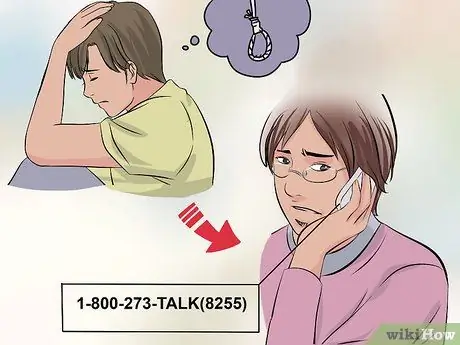
Step 2. Identify the thoughts that lead to suicide
While not always necessary in diagnosing depression, these thoughts can be a symptom of a disorder. If you have thoughts of committing suicide or want to do so, don't wait any longer. Call a friend or family member immediately or seek professional help.
- If you are in danger of nearing suicide, call emergency services.
- You can also go directly to the emergency department at the hospital. Mental health professionals will help you come up with a plan to calm yourself down and find ways to deal with suicidal thoughts.
- If you have a therapist, tell him or her right away if you have suicidal thoughts.
- In Indonesia itself, you can call the emergency report number 119 when you have thoughts of committing suicide. You can also contact the International Wellbeing Center via short message or WhatsApp at 081290529034.
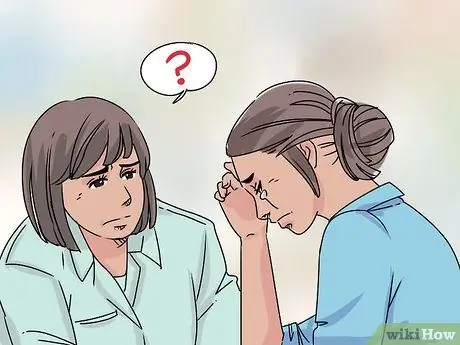
Step 3. Diagnose physical symptoms
Depression causes several changes in the body and behavior. When diagnosing depression, a mental health professional will look at physical symptoms to help with the screening process. As with emotional/mental symptoms, a diagnosis of depression often includes most of the following symptoms for two weeks or more:
- Changes in sleep patterns (eg sleeping too long or not getting enough sleep)
- Changes in eating patterns (eating too much or lack of appetite)
- Decreased movement (e.g. simple body movements that seem to require all the energy)
- Loss of energy and feeling tired (no energy for daily activities or unable to get out of bed)
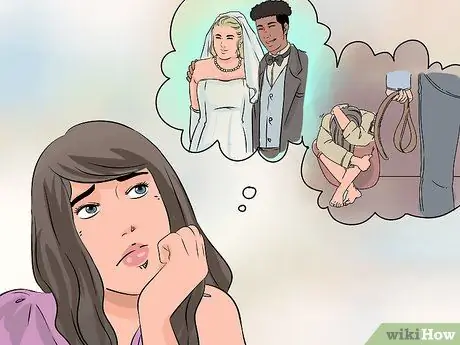
Step 4. Reflect on recent or prolonged stressful events
Recent stressful events can trigger bouts of depression. Even positive events such as moving house, getting a new job, getting married, or having children can trigger depression. Your body and mind need time to adapt to new experiences and sometimes, recent changes can trigger depressive episodes. If you've experienced traumatic moments (such as losing a child or experiencing a natural disaster), those moments can breed depression. In addition, prolonged negative experiences (eg physical, emotional, or sexual abuse, both in childhood and adulthood) can trigger depression.
- The use of drugs or chemicals can trigger depression, especially alcoholism.
- Health problems can also trigger depression (eg when you get a major diagnosis or face health difficulties).
- Just because you experienced a stressful event, doesn't mean you're going to get depressed right away. These events can trigger a depressive episode, but nothing can just make you feel depressed by yourself.
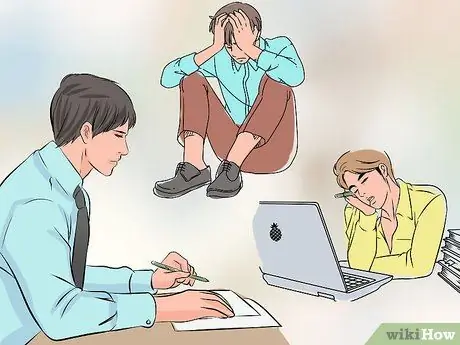
Step 5. Check personal history
If you have experienced symptoms of depression in the past, you are at a greater risk of experiencing depression again. About 50% of people who experience a depressive episode will experience depression again in the future. Check past experiences/history and note any prolonged periods of depressive symptoms you have had.
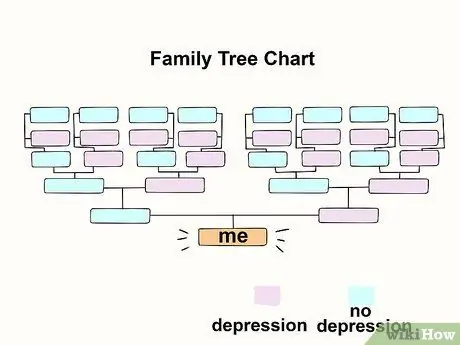
Step 6. Check family history
Pay attention to the relationship between depression and a close family member (brother, sister, or parent). After that, check with other family members (aunts, uncles, cousins, grandparents) and see if they have experienced symptoms of depression. Also pay attention to whether anyone in your family has committed suicide or has mental health problems. Depression tends to run in families and has a strong genetic component. If you see significant cases of depression in your family, you have a higher risk of developing depression.
It is important for you to understand that every family has a relationship with mental health disorders. Just because you have an aunt or parent who has a mental illness doesn't mean you'll have depression or another mental health disorder
Part 2 of 3: Understanding the Different Forms of Depression

Step 1. Watch for symptoms of seasonal affective disorder (SAD)
You may feel happy and free in the hot season/weather, but then feel sad in the gloomy weather/winter. This condition, known as seasonal affective disorder (SAD) begins when the days get shorter and the days are less bright. The symptoms may vary, but are generally similar to those of major depressive disorder, and differ based on the geographic location of the sufferer. Places that get very little sunlight for a given period of time (eg Alaska, United States) have higher rates of populations with seasonal affective disorder.
- If you suffer from this disorder, take advantage of the available sunlight. Get up early in the morning and go for a walk, or take your lunch time to get more active/enjoy the outdoors longer during the day.
- Seasonal affective disorder can be effectively treated with light therapy, but nearly half of people with this disorder do not feel better with therapy alone. For more information on light therapy, check out the article on how to choose a light therapy box.

Step 2. Understand the difference between teen depression
Teenagers experience depression in different ways than adults. Adolescents may appear more irritable, grumble, or unfriendly when they are depressed. Unexplained aches or pains in the body can also indicate depression in teens.
- Sudden outbursts of anger and increased sensitivity to criticism also signal depression.
- Dropping grades at school, closing off from friends, and use of alcohol or drugs can also signal depression in teens.
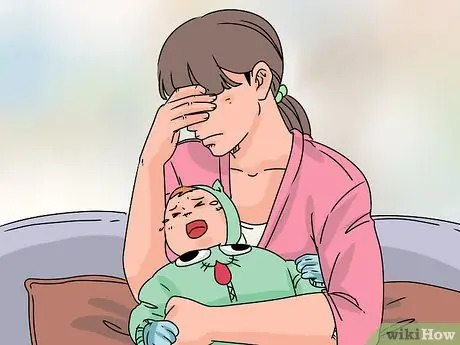
Step 3. Recognize the symptoms of postpartum depression
Childbirth is a memorable moment that marks the formation of a family and the presence of children. For some women, the postpartum moment is filled with excitement and joy. Hormonal, physical changes, and a new role as a babysitter can be overwhelming. About 10-15% of women experience postpartum depression. For some women, postpartum depression occurs soon after labor is over. Meanwhile for others, symptoms of depression appear within the first few months, and gradually become more pronounced. In addition to the symptoms of depression described above, some other signs of postpartum depression include:
- Lack of interest in newborns
- Negative feelings towards baby
- Anxiety about harming the baby
- Lack of self care

Step 4. Understand persistent depressive disorder or dysthymia
This type of depression is generally not as severe as major depressive disorder, but it lasts longer. People with persistent depression generally display a sad or gloomy mood for 2 years or more. Major depressive episodes may occur during this time, but a sad or depressed mood persists for 2 years.
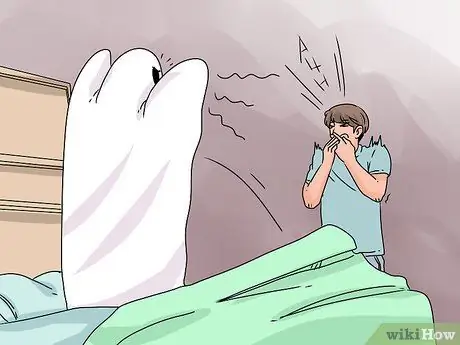
Step 5. Recognize the symptoms of psychotic depression
This form of depression occurs when a person experiences severe depression and psychosis. Psychosis includes false views/beliefs (eg believing that you are a president or a spy), delusions (distance from accepted reality, such as believing that you are being spied on), or hallucinations (hearing or seeing things that no one else hears or sees).
Psychotic depression can be dangerous and ends in death because the sufferer distances himself from reality. Seek help immediately by calling a friend or emergency services
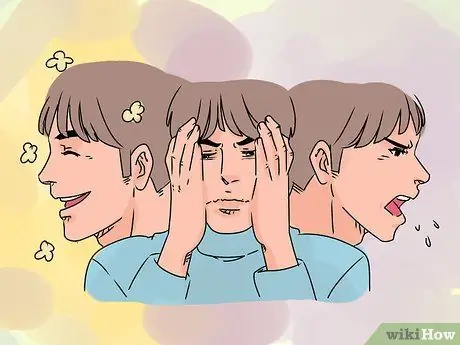
Step 6. Recognize the symptoms of bipolar disorder
This disorder is characterized by a cycle of mood swings. A person can experience great sadness (serious depression), then feel great joy (mania). Bipolar disorder drastically changes the mood, behavior, and mindset of sufferers. When experiencing a manic phase, a person may exhibit different attitudes, such as quitting work, going shopping in bulk, or working on projects for days without sleep. Meanwhile, the depressive episodes he experienced tended to be severe. At this point, the patient is unable to get out of bed, do chores, or perform basic daily functions/activities. If you experience symptoms of bipolar disorder, seek professional help immediately. It is possible that these symptoms cannot be relieved without intervention. Some of the symptoms of the mania phase include:
- There is an unusual feeling of optimism
- It's easy to get annoyed
- Feeling very energetic, even if you don't get enough sleep
- Existing thoughts appear simultaneously
- High speed of speech
- Unbalanced judgment, impulsivity
- The appearance of delusions or hallucinations
- For more information about this disorder, read the article on how to tell if you have bipolar disorder.
Part 3 of 3: Dealing with Depression
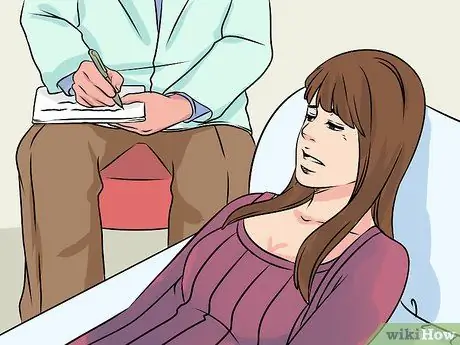
Step 1. Find a mental health professional/expert
If you're unsure of your emotional state or are struggling to keep from sinking into a depressive episode, try seeking therapy. A therapist can help you understand depression and find ways to manage and prevent future phases of depression. Therapy is a very effective form of treating depression because it allows you to explore the various sources of depression, relieve negative feelings, and begin to feel or act normal again.
Cognitive-behavior therapy (CBT) is very effective in treating depression. This therapy helps you deal with negative thoughts and change your mindset to a more positive one. You can learn to interpret/reread the environment and interactions in a more supportive way
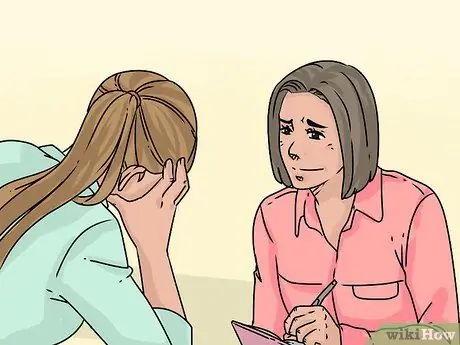
Step 2. Try consulting a psychiatrist
For some people, therapy followed by medication can be a good form of dealing with depression. Be aware that medication does not necessarily relieve or completely treat depression and carries certain risks. Contact your medical provider or psychiatrist to learn more about antidepressant medication.
- Discuss possible side effects of the drugs used with your doctor and learn about the risks of the treatment.
- If you have a higher tendency to commit suicide because of your medication, call your doctor immediately.
- If you are on depression treatment, don't stop taking it immediately after seeing the results. Use or undergo treatment as directed by a doctor.
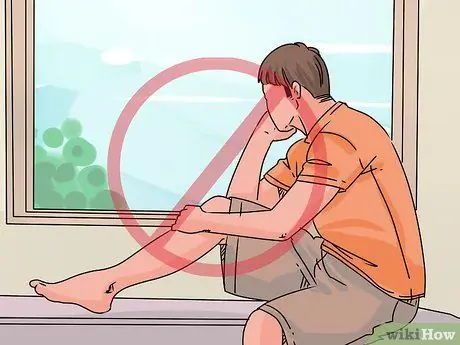
Step 3. Do not close or isolate yourself
It is important that you feel loved and supported, especially if you are dealing with or battling depression. When you're depressed, you're usually more likely to withdraw from friends and family. However, spending time with friends can actually improve your mood. When sinking into depression, try to make time for friends, even if your body or mind "disagrees."
You can also join a support group. Check with groups or foundations such as Into The Light, Indopsycare (https://indopsycare.simplybook.asia/), or Yayasan Pulih for information on depression and find support groups
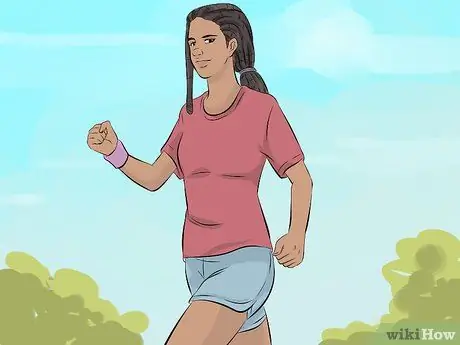
Step 4. Try exercising
The benefits of exercise in treating depression are strongly supported by growing research. Some research suggests that exercise itself can relieve symptoms of depression and prevent them from appearing in the future. It can be difficult to motivate yourself to go to the gym or go for a walk, especially when depression seems to have drained all of your energy. However, try to find a little motivation and exercise.
- You can do simple exercise, such as walking for 20-40 minutes every day. If you have a pet, show a commitment to taking it for a walk for an added boost of happiness.
- If you're having a hard time finding motivation to stay active, remind yourself that once you're ready to move, you won't regret it. A person who goes to the gym rarely has a look like “I've wasted my time. I shouldn't have left."
- Find an exercise buddy to get motivated. Having some kind of “responsibility” can encourage you to go to the gym.
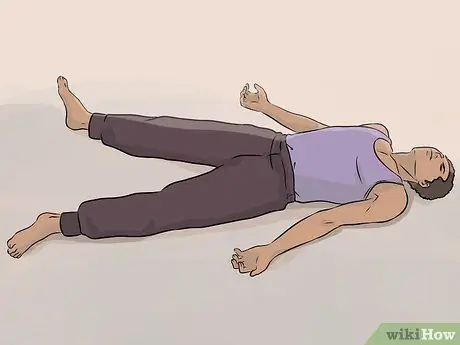
Step 5. Manage perceived stress
Stress management is one way to treat and prevent depression. Do things that calm you down every day (social media use doesn't count). Try yoga, meditating, taici, or muscle relaxation techniques. You can also keep a journal or use your creativity to draw, paint, or sew.






